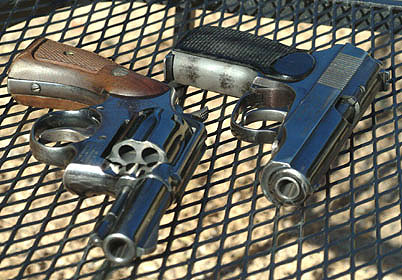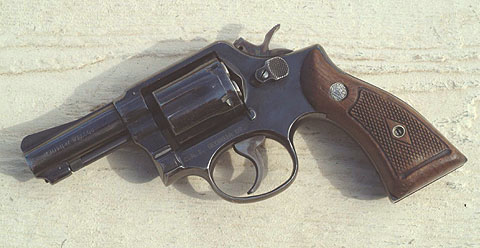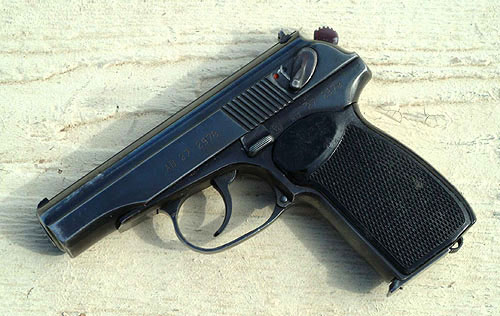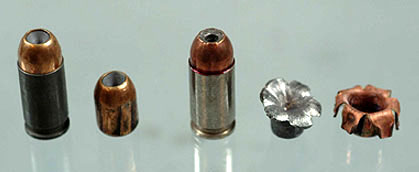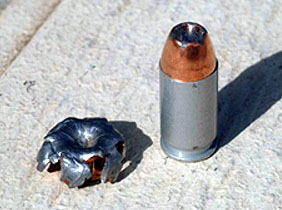![]()
DEBKAfile: A third US carrier, the nuclear-powered USS Enterprise Strike Group is speeding towards the Persian Gulf
June 21, 2007, 12:17 PM (GMT+02:00)
| |  | |
| | ||
| |
According to DEBKAfile’s military sources, the US naval build-up off the shores of Iran marks rising military tensions in the region, accentuated by last week’s Hamas victory which has endowed Iran with a military foothold on Israel’s southwestern border.
The USS Enterprise CVN 65-Big E Strike Group, the US Navy’s largest air carrier, will join the USS Stennis and the USS Nimitz carriers, building up the largest sea, air, marine concentration the United States has ever deployed opposite Iran. This goes towards making good on the assurances of four carriers US Vice President Dick Cheney offered the Gulf and Middle East nations during his May tour of the region.
The “Big E” leads a strike group consisting of the guided-missile destroyers USS Arleigh Burke DDG 51, USS Stout DDG 55, Forrest Sherman DDG 98 and USS James E. Williams DDG 95, as well as the guided missile cruiser USS Gettysburg CG 64, the SS Philadelphia SSN 690 nuclear submarine and the USNS Supply T-AOE 6>
On its decks are the Carrier Air Wing CVW 1, whose pilots fought combat missions in the Gulf and Arabian Sea during 2006. The Air Wing is made up of F/Q-18 Super Hornet strike craft, the Sidewinders Strike Fighter Squadron VFA-86, the 251st Marine Fighter Attack Squadron MFA, and the Electronic Attack Squadron VAQ 137.
The 32nd Sea Control Squadron VS consists of S-3B Vikings. The Airborne Early Warning Squadron VAQ 3 flies E-2C Hawkeye craft. The Fleet Logistics Support Squadron VRC is based on C-2A Greyhounds.
DEBKAfile’s military sources report Washington is considering deploying the fourth US carrier for the region in the Red Sea opposite Saudi Arabian western coast to secure the three US carriers in the Gulf from the rear as well as the Gulf of Aqaba and Suez Canal.
..............................................................................................
go to www.commentsbyt.blogspot.com
go to www.actionsbyt.typepad.com
go to www.actionsbyt.wordpress.com
......................................................................................................................
COPIED FROM STEPHEN CAMPS WEBSITE
HK P7: A Triumph of Technology over Marketability?
By David Tong
Most regular readers of this website like single-action pistols, and I also prefer my service-type handguns in .45ACP constructed with little to no plastic on them, as it’s my view that using plastics are just a cost savings method for the manufacturer. True, they may be more ultimately durable and they are a little nicer to the touch when it’s very warm or very cold out, but they are generally also less than perfectly balanced in the hand, especially as you run the magazine down.
Heckler & Koch as a company has always gone in a different direction than most mainstream manufacturers of handguns, often employing innovative operating systems and feature sets, and they also have a strong military and law enforcement following because their products are usually very well engineered and manufactured. Up until the introduction of the USP, a rather conventional Browning-type tilt lock short recoil action, the only polymer framed pistol they have ever built was the nearly forgotten double-action only 9mm VP70 of the 1970s, which was not a strong seller at all, being more a neutered full-auto machine pistol with shoulder stock than sidearm.
The P7 was the result of German police pistol trials of that same decade. After WWII, the German military and police largely used the old Walther P-38, renamed P-1, a double-action single stack 9mm of considerable bulk for its power, due to the same lower barrel mounted pivoting locking block which both weakened and widened the slide and which the current U.S. military Beretta 92 shares. A later variant of the P-1 was the Walther P-5, which served to address slide cracking by enclosing the formerly open topped slide with an enclosed slide with a small ejection port. This pistol, though shorter than the P-1, was also just as wide, and was not as easy for plainclothes police officers to conceal as other designs.
H&K studied a 1920’s American patent for a squeeze cocking design, and even modified a 1911 pattern pistol to test its feasibility and ergonomics, before deciding that the cocking lever be relocated from the rear of the grip to the front. The reason for adopting this design was to produce a pistol which was rendered completely safe unless the cocking lever was depressed fully while in the firing grip, as well as to render the pistol completely inert if dropped accidentally. It requires a bit over seven pounds to initially depress, but only 2.5 lbs. to keep it depressed for firing, not much different from the "firm handshake" level of force to properly control any other pistol, though some police agencies have noted that the proprietary nature of its manual of arms have prevented bad guys from shooting a disarmed cop.
While the squeeze cocker was the P7s main difference when presenting the pistol from its holster, there were a few other interesting technical developments incorporated into the design.
First was the use of a frame mounted gas cylinder just below the fixed barrel. This is unlike the usual gas piston used to operate a rifle action, in this case gas from the fired cartridge vented into the cylinder and a ridged piston mounted to the slide was forced forward until pressure levels dropped to allow the slide to recoil and recock the striker, a gas delay system. The use of this design means that there is no actual locking mechanism, meaning the slide and frame are of minimal dimensions in both height and width.
A striker fired pistol, where there is no traditional external or internal hammer, can have a very low "bore center." What that means is geometrically, the center of the bore can lie very close to the base of recoil support, which of course is the long axis of your arm, hence lessening muzzle "flip" or rise on successive shots. No other pistol has as low a bore center as the P7, and when you combine that with the relatively-low powered 9mm cartridge in an all steel pistol, fast repeat shots are more easily obtained than with most other pistol designs.
The fixed barrel, just as in a revolver or a pocket automatic, has the theoretical advantage of being more mechanically accurate because the barrel is not moving with the slide as in all other service caliber pistols. However, properly designed Browning tilt lock actions are more than good enough in this regard.
The barrel itself is a hammer forging, something which the Germans and Austrians have employed for over 40 years, because it is an inexpensive way to build a decent if not outstanding barrel. It features polygon rifling that dispenses with the usual cut lands and grooves, and produces about 5% more muzzle velocity than a conventional barrel due to better gas seal, plus it’s a fair bit easier to clean. (The P7 has regularly shown some faster velocities when checked on the chronograph against pistols having conventional rifling and of the same bbl length…SAC)
The P7 barrel also has shallow chamber flutes, which uses the gas of the spent case to float it out of the chamber. The extractor is only used to clear the pistol administratively, and assists to guide the empty case out for more consistent EJECTION. (This is true. I recall an HK representative firing a P7 sans extractor at a tactical school. It worked just fine….SAC)
The grip of the P7 is the same 110 degree angle employed by the 1911 and used by most service pistols today. However, H&K did something interesting here too. They used a nearly 90 degree angle for the magazine insertion, and with the typical high-quality all-steel magazine they produced, the feeding of the cartridge bypasses the usual feed ramp on the frame and heads straight into the chamber, thus improving feeding. Indeed, Massad Ayoob once stated that the P7 he lent to students of his shooting school 15 or so years ago was the most reliable auto pistol he had ever encountered to date, digesting some 4000 rounds before requiring the gas cylinder to be cleaned due to slow cycling and finally, stoppages. This compares very favorably with the latest well-manufactured designs.
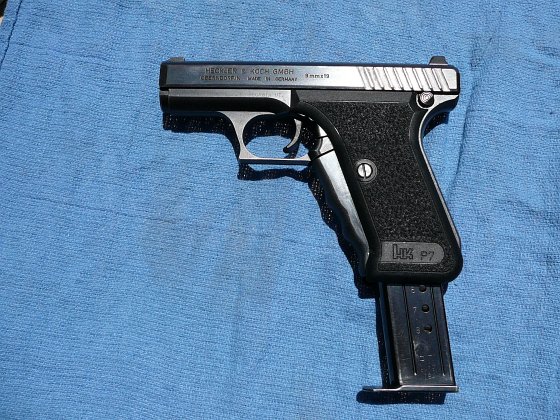
Note near straight-line magazine angle to enhance feeding
Not only does this more nearly perpendicular magazine angle help feeding, it also allowed the 4.13" barrel to be located more to the rear of the pistol, thus shortening its overall length, again aiding in concealability. The P7 is only ½" longer than a Walther PPK, and hardly wider, to put it in the proper perspective, yet it is really no narrower than a 1911.
While detail stripping is best left to a trained armorer, as most "modern" designs typically need to be, field stripping of the P7 is the easiest of any service pistol in the world in my experience. Remove the magazine and clear the chamber. Retract the slide about 3/8" while depressing a disassembly button and lifting the slide up and forward. For example, this is much faster than the Glock, as that pistol requires the trigger to be squeezed and "decocked" before the disassembly slides can be depressed and the slide removed, and the Austrian pistol is considered one of the easier ones extant. If one owns a P7M8 (8 shot single stack 9mm), the P7M13 (13 shot double stack 9mm), or the P7M10 (10 shot .40 S&W), one can even remove the striker assembly without tools for cleaning.
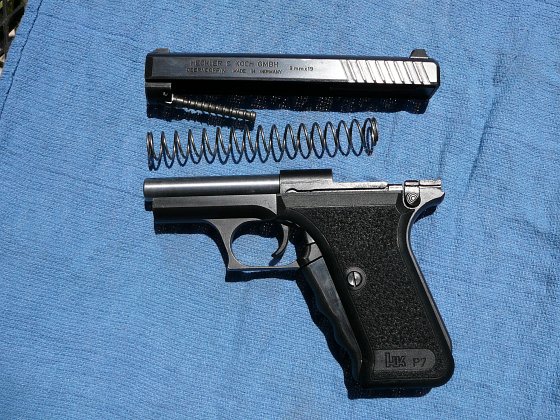
Pistol field-stripped; disassembly button to rear of receiver at top of grip
My personal P7 was built in late 1982, and is a former West German Interior Ministry police pistol.
It has a rather frustratingly slow to use heel-type magazine release and magazines have to be extracted by hand before the fresh one can be inserted. The later M8, M10, and M13, and the rarely seen K3 variants went to an ambidextrous steel lever located just behind the trigger which sweeps downward and magazines simply fly out for fast reloads.
The slide itself appears to be a thin walled machined forging, with a breechblock that houses the striker assembly that is welded in place from its underside. The frame also appears to be a forging, but with extensive use of stamped steel trigger mechanism parts. The only plastic pieces on the pistol appear to be the thin, stippled stocks, the magazine floorplate retention plate, and the white dots on the sights.
The P7 has several "issues" besides the 9mm cartridge’s power, and those include the gas cylinder transferring heat to the inside of the trigger guard after about 35 rapid shots causing the need for the average shooter to let it cool, as well as the cleaning of the sharply ridged piston and its cylinder. While heat can be a concern, this is probably more an illusory issue than a real problem, tactically, because if one hasn’t solved a social encounter within the first 2-5 shots, it probably won’t matter anyway. It was addressed, again, in the later M8, M10, and M13 by lengthening the trigger guard and installing a plastic heat shield on the frame over the trigger, but those pistols merely delayed the time and round count until discomfort.
The matter of keeping the piston and cylinder properly clean HK addressed by providing a small bronze brush with each new pistol to scrub out the cylinder, while conventional bronze "toothbrushes" can be used to remove powder fouling from the piston. A gas cylinder reamer is theoretically available, as is a striker disassembly tool.
Accuracy of the piece is not quite comparable to that of my long since departed M8, and 5 shot groups of Winchester white box 115gr. Ball averaged three inches, and the most potent ammunition I tried was the Winchester Ranger SXT 127gr. "+P+" which averaged a bit over four inches. There is no "free lunch," though as the recoil level of the latter cartridge, boosted to the 9mm’s power limit (approximately 1300fps) in order to increase its statistical "stopping power," is actually sharper and quite a bit noisier than the .45ACP. It wouldn’t offer any real advantage for fast repeat shots for the experienced pistolero, and this in an all-steel pistol weighing some 32 ounces empty, nor was there an accuracy advantage, though the 9 is not really known for its gilt-edged accuracy either.
All shots were point of aim, point of impact, thus showing H&K regulated the fixed sights well for this range. The sights, befitting a combat piece, leave lots of light showing around the Patridge-style front blade, making it easy to pick up but lacks a bit of precision at longer range. HK does offer three different front sight heights to regulate elevation, and the relatively clean single action trigger system means you aren’t fighting a heavy, creepy pull, and the pistol essentially becomes a paperweight the moment it leaves your hand. Extraction is aided by the fluted chamber, which incidentally does not impair reloading of the fired cases, and ejection is brisk.
As expected, the all-steel magazine fed the pistol without a hitch, in contrast to "low cost bidder" 1911 or Beretta 92 magazines which are often the cause of unreliability. At over $50 each retail, they’d better be good, and they are.
Do be careful to release the squeeze cocker when re-holstering though, as there have been reports of negligent discharges by law enforcement officers who failed to remove their trigger fingers from inside the guard.
Finding holsters for the older model P7 can be a challenge due to the smaller trigger guard, though I was able to look online and find a neat German-made pancake-style thumb-break concealment rig as well as a former German police Level II security duty rig without much difficulty. However, I believe Don Hume Leather still manufactures several current models for the piece as well as the later M8 and M13.
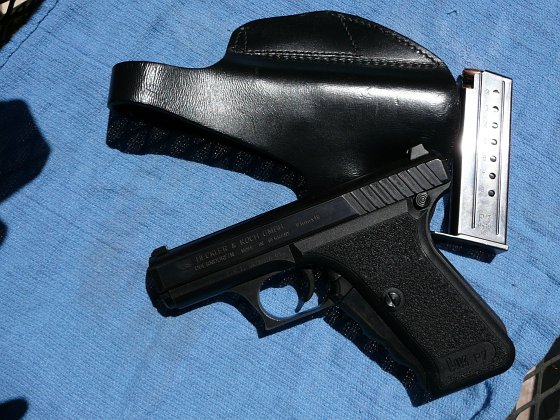
P7 with German police holster and magazine
Historically, the pistol is interesting in that the Germans began the 20th Century by adopting an all-steel, single-column magazine, striker fired, 4" barreled 9mm service pistol of unusual design and operation (the P-08 "Luger") and nearly ended that century the same way, at least for police use. I personally would love to see HK build the "P7M7" in .45ACP, which they only built six prototype feasibility examples of, but this is an impossibility due to both cost and marketability reasons.
P7M10s made for the .40 Smith & Wesson cartridge. I have not personally shot one but found that the greatly increased slide height and thickness spoilt the decent balance and feel in the hand compared to the original 9mm, and this was done of course to attenuate slide velocity. They are also rather prized collector’s items at this point, bringing upwards of $1500 at the time of writing making them sort of moot for most of us when other good .40 caliber service pistols can be had for less than half that figure.
Needless to say, if you like and trust the 9mm, and can afford to purchase one of these now sadly discontinued pistols, do it. They are the last of a dying breed, when service and defense sidearms were built of machined steel to last generations, and if you look at the quality and ultimate durability, you might even think the price is "cheap," especially given the "resale value" of HK products.
........................................................................................................................................................................
YOU MUST CALL YOUR SENATOR OR CONGRESS PERSON NOW BEFORE ITS TOO LATE. YOU ARE LOSING YOUR COUNTRY, WE HAVE BEEN SOLD OUT. YOU MUST TELL THEM TO VOTE "NO" FOR ANY AMNESTY FOR ILLEGAL ALIENS...... DO IT NOW...THE CLOCK IS TICKING FOR OUR SURVIVAL.
go to www.michaelsavage.com
go to http://www.numbersusa.com/index
go to www.commentsbyt.blogspot.com
go to www.actionsbyt.typepad.com
go to www.actionsbyt.wordpress.com
go to http://www.rense.com/general76/low.htm

| ||
| Illegals Setting Fires to Cross Border | ||
| ||
 | ||
| Coronado National Forest employees could call it a war zone. Some illegal aliens, particularly human and drug traffickers, are resorting to extreme measures to cross the border between Mexico and the remote southern Arizona forest. Border Patrol agents in the region face the highest rate of illegal border crossings in the nation—nearly half a million illegals crossed here in 2006. Agents also confiscated 100,000 pounds of marijuana that was being smuggled through the forest last year (Washington Times, June 19). The Times also reports that last month the Border Patrol caught over 300 aliens and 600 pounds of marijuana in a 3-mile stretch over 10 days. In response to the agency’s activities within the operation, illegals set at least five fires in an attempt to burn agents out of one observation post. The fires were not the only ones set by Mexican smugglers. In fact, Forest Service firefighters have seen armed smugglers walk right through their ranks as they were trying to battle fires. Now, law enforcement officers must accompany firefighters when they are sent to put out the flames. The fires correspond with a 100 percent rise in attacks on Border Patrol agents, including threatening with deadly weapons, assault and crude firebombings. Illegals have targeted agents with Molotov cocktails and grapefruit-sized rocks wrapped in gasoline-soaked rags and set on fire. Agents have been shot at, and some Border Patrol vehicles have been rammed, according to the Times report. Besides threatening the lives of border agents, firefighters, law enforcement officers, and the users of the forest system and spoiling acres of wilderness, the increasingly violent and still unchecked problem of illegal immigration has far-reaching ramifications. For more on illegal immigration’s effect on America’s borders, laws, government and citizens, read “The Trouble With Immigration” and “Nation: A Place With Borders.”  |
